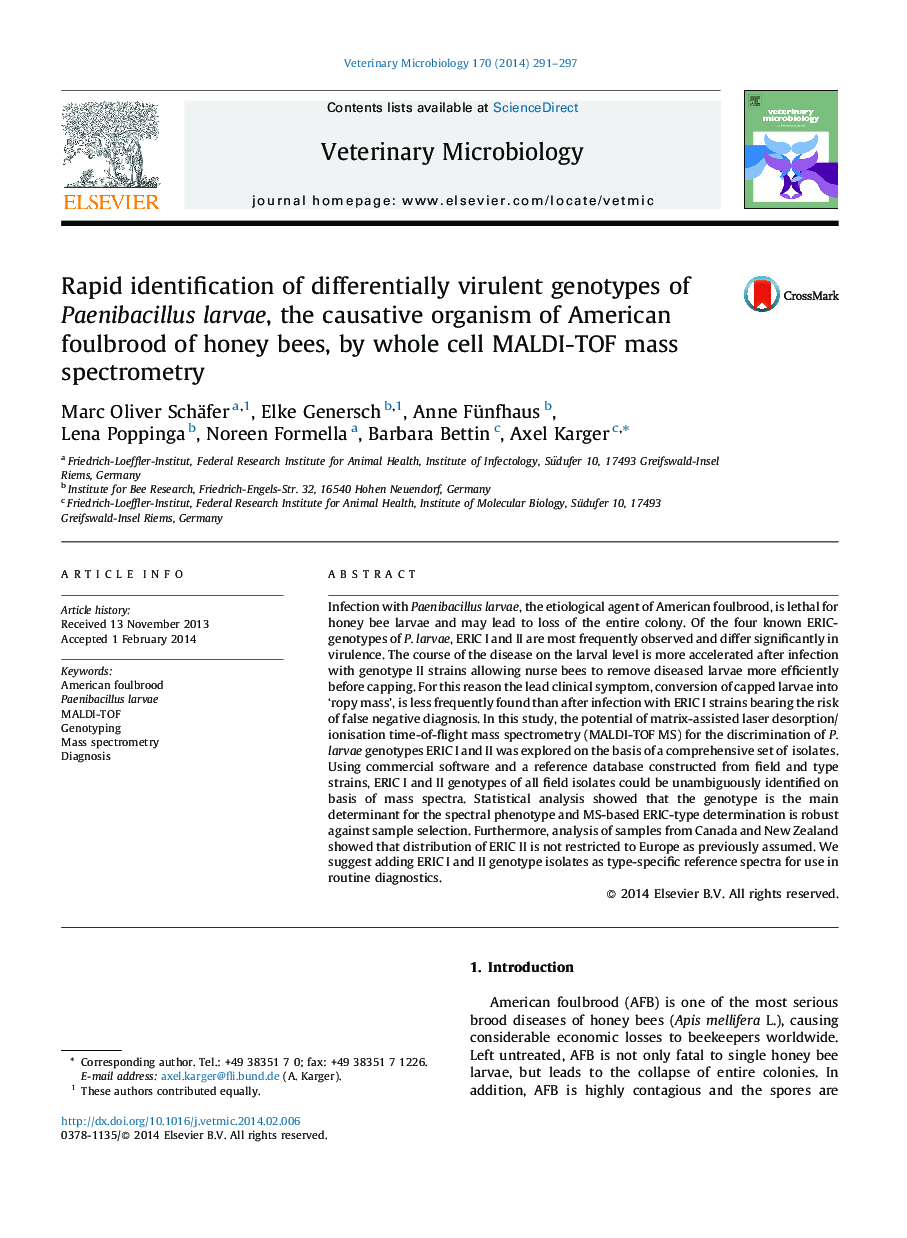| Article ID | Journal | Published Year | Pages | File Type |
|---|---|---|---|---|
| 5800740 | Veterinary Microbiology | 2014 | 7 Pages |
Infection with Paenibacillus larvae, the etiological agent of American foulbrood, is lethal for honey bee larvae and may lead to loss of the entire colony. Of the four known ERIC-genotypes of P. larvae, ERIC I and II are most frequently observed and differ significantly in virulence. The course of the disease on the larval level is more accelerated after infection with genotype II strains allowing nurse bees to remove diseased larvae more efficiently before capping. For this reason the lead clinical symptom, conversion of capped larvae into 'ropy mass', is less frequently found than after infection with ERIC I strains bearing the risk of false negative diagnosis. In this study, the potential of matrix-assisted laser desorption/ionisation time-of-flight mass spectrometry (MALDI-TOF MS) for the discrimination of P. larvae genotypes ERIC I and II was explored on the basis of a comprehensive set of isolates. Using commercial software and a reference database constructed from field and type strains, ERIC I and II genotypes of all field isolates could be unambiguously identified on basis of mass spectra. Statistical analysis showed that the genotype is the main determinant for the spectral phenotype and MS-based ERIC-type determination is robust against sample selection. Furthermore, analysis of samples from Canada and New Zealand showed that distribution of ERIC II is not restricted to Europe as previously assumed. We suggest adding ERIC I and II genotype isolates as type-specific reference spectra for use in routine diagnostics.
